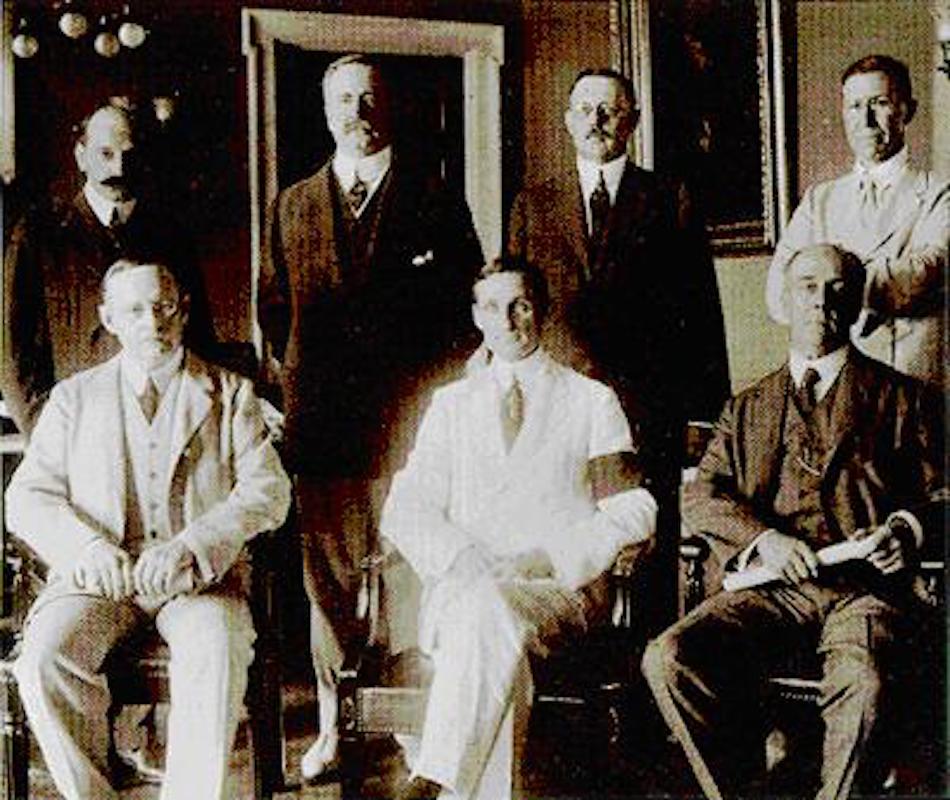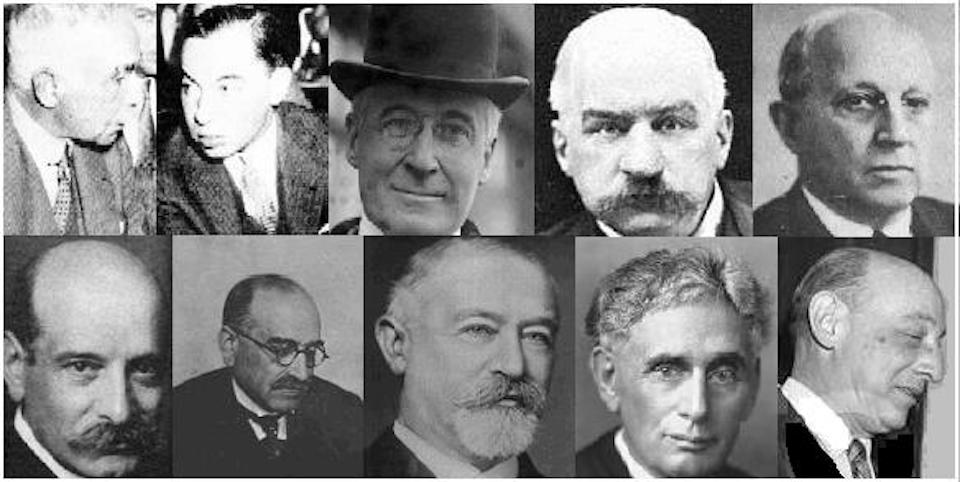1910 International Bankers Meet to Establish Decentralized Central Bank
 In response to the J. P. Morgan caused bank panic of 1907, the Aldrich-Vreeland Act of 1908 was passed to provide for the issue of emergency currency during widespread financial crisis. The National Monetary Commission was also established under this act to develop a more durable solution to the nation's (banker contrived) problematic financial and banking practices.
In response to the J. P. Morgan caused bank panic of 1907, the Aldrich-Vreeland Act of 1908 was passed to provide for the issue of emergency currency during widespread financial crisis. The National Monetary Commission was also established under this act to develop a more durable solution to the nation's (banker contrived) problematic financial and banking practices.
The commission, under the direction of Senator Nelson Aldrich proposed a banker controlled plan. Aldrich's daughter married John D. Rockefeller, Jr., and his son Winthrop served as the chairman of the Rockfellers' Chase National Bank. Progressives led by William Jennings Bryan, strongly opposed such a plan. They preferred a central bank under public (governmental), not private (banker) control. With the election of Democrat Woodrow Wilson in 1912, the plan was effectively stalled.
The legislation he introduced in the Senate, which became the basis of the Federal Reserve System, was not written by him. It was crafted by several of the world's richest bankers, at a secret nine-day meeting in 1910, at a private club on Jekyll Island off the Georgia coast.
In addition, the purpose of this meeting on Jekyll Island was to come to an agreement on the structure and operation of a banking cartel. The goal of the cartel, as is true with all of them, was to maximize profits by minimizing competition between members, to make it difficult for new competitors to enter the field, and to utilize the police power of government to enforce the cartel agreement.
In 1910 Aldrich and a variety of executives that represented 25% of the world's wealth secluded themselves for ten days on Jeckyll Island Georgia. The meeting was directed by Paul Warburg. The executives included:
- Nelson W. Aldrich, Republican "whip" in the Senate, Chairman of the National Monetary Commission, business associate of J. P. Morgan, father-in-law to John D. Rockefeller, Jr.
- Abraham Piatt Andrew, Assistant Secretary of the United States Treasury
- Frank A. Vanderlip, president of the National City Bank of New York, the most powerful of the banks at that time, representing William Rockefeller and the international investment banking house of Kuhn, Loeb & Company
- Henry P. Davison, senior partner of the J.P Morgan Company
- Charles D. Norton, president of J. P. Morgan's First National Bank of New York
- Benjamin Strong, head of J. P. Morgan's Bankers Trust Company
- Paul M. Warburg, a partner in Kuhn, Loeb & Company, a representative of the Rothschild banking dynasty in England and France, and brother to Max Warburg who was head of the Warburg banking consortium in Germany and the Netherlands
- Colonel Edward House, who later became president Woodrow Wilson's adviser and founder of the controversial banking elite think tank the Council on Foreign Relations.
International Bankers - Controllers of the Federal Reserve System
 With the Rothschild's indirectly controlling the greatest portion of approximately 25%:
With the Rothschild's indirectly controlling the greatest portion of approximately 25%:
- Rothschild Banks of London and Berlin
- Lazard Brothers Bank of Paris
- Israel Moses Sieff Banks of Italy
- Warburg Bank of Hamburg, Germany and Amsterdam
- Kuhn Loeb Bank of New York
- Lehman Brothers Bank of New York
- Goldman Sachs Bank of New York
- Chase Manhattan Bank of New York (Controlled By Rockefeller Family Tree)
Currently, small percentages of stock is required to be purchased by commercial banks in the system. Majority stock owners of these commercial banks are also owned by the same trusts, controlled by the same families whom own the banks named above.

Comments
Post a Comment